Menu

Did you know rural utilities can get loans of up to $2 million at zero percent interest? This helps boost growth in their local areas. These grants and loans support businesses and community projects in the countryside. The USDA shows it cares about rural areas by offering these. It wants to help create jobs and grow the economy there.
Certain groups can get these funds, like the Rural Utilities Service (RUS) borrowers and not-for-profit utilities. They can apply even if they’ve paid off a previous RUS loan. One helpful project type is the Revolving Loan Funds (RLF). They help increase jobs and grow local economies significantly.
Rural development grants are vital for helping improve the life and economy of rural places. They provide money for important projects in communities. This can lead to more jobs and a better life for people in these areas. The USDA is keen on giving out grants for village improvement and rural growth. This shows their big plan to help and renew the countryside.
Rural development grants aim to boost the economy of countryside areas. They are important as they help create jobs and better local services. For example, the Distance Learning & Telemedicine Grants use the internet to make remote areas less isolated.
The main goals of these grants are to help the local economy and support farming. They also aim to make communities better in the long term. For example, Housing Preservation Grants fix homes for people with low incomes. The Business and Industry CARES Act helps rural businesses affected by things like the coronavirus. This shows a broad effort to improve rural life.
Rural development schemes offer many grants. For instance:
There’s also money for village improvement and countryside development. This money can go to projects like business support and better health care. High Energy Cost Grants, for example, help cut power bills. Each grant type has its rules and ways to apply. This is so they can meet different community needs well.
Rural Business Development Grants look at things like how many jobs a project will create. They also consider if there’s money from non-government sources. Plus, they check if the area really needs the help. This way, the most important projects get funded.
The government offers various funding options for rural development. It’s key to know the difference between Federal and State funding to find the right support. The USDA supports these investments, aiming to improve rural areas and agriculture with its many programs.
Federal funds are great for big projects, thanks to the USDA. They help with rural infrastructure, farming, and making communities better. On the flip side, State funds are more specialised, focusing on local needs. This helps meet unique challenges in different rural spots. Both Federal and State help build rural areas stronger and more sustainable.
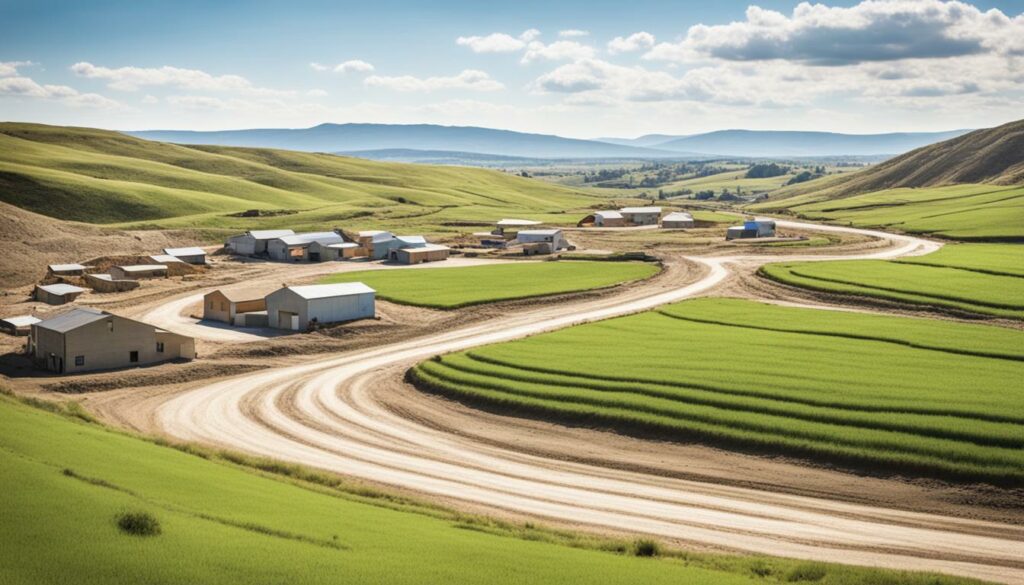
The USDA has lots of programs for rural areas and farms. They work on housing, utilities, and helping businesses grow. For instance, they fund projects for housing and community buildings. In 2023, they provided $3.45 billion in loans for rural health, schools, and clinics.
They also help farmers, like through the Risk Management Agency for crop insurance. The Specialty Crop Block Grant Program helps fruit and veggie growers. These efforts, part of the USDA’s plans, help agriculture by supporting them and creating new markets.
Using these funds well can really push rural projects forward. It could lead to lasting success in America’s countryside.
It’s key to know if you meet the eligibility for rural grants. This knowledge helps in getting support for local projects. Rural grants offer great chances to make and keep country areas strong.
Those who can get these grants are Public Bodies, Indian Tribes, and Nonprofits helping rural areas. The funding can help in many areas. From training to building things and even fighting pollution, a lot can be done.
A lot is checked when you apply. They look at job creation, how much other money you get, and what you really need. It’s crucial to understand these funding options for getting a grant.
The grants help areas away from big cities. These might struggle to grow because they are small or in a tough spot. You can apply from January 2, 2024, to April 1, 2024.
Not all spots have the same chance. More money goes to those who need less. You don’t have to share the cost, which is a big help for small projects.
The effort is part of the Consolidated Farm and Rural Development Act. It shows how the government wants to help make areas better through these focused funds.
| Criteria | Details |
|---|---|
| Application Open Date | January 2, 2024 |
| Application Close Date | April 1, 2024 |
| Priority | Smaller funding requests |
| Opportunity Grants Limit | Up to 10% of total annual funding |
| Eligible Areas | Rural areas outside cities with populations over 50,000 |
| Cost Sharing Requirement | None |
| Authorised By | Consolidated Farm and Rural Development Act |
To apply successfully for local grants, approach the process carefully. Always have your documents ready. Watch out for mistakes that could slow you down.
For a smooth grant application, some documents are a must. These include:
Some grants need you to explain why you need the money. It’s key to follow the requirements outlined in the Notice of Funding Opportunity (NOFO). Also, make sure you meet local, state, and federal rules.
Don’t make these mistakes if you want your application to succeed:
There’s help available to make applying easier. Use the Loan Assistance Tool for step-by-step help. Talk to experts and join webinars to improve your application’s chances.

To make your application strong, focus on the project’s timeline and the USDA’s requirements. This will help you navigate the grant application process well.
The Revolving Loan Funds (RLF) program offers financial help for community projects in rural areas. The USDA manages these funds. They help local utilities support economic growth with zero-interest loans and grants.
Local utilities can get big financial support through the RLF program. They can get up to $300,000 in grants to start the Revolving Loan Fund. They might also get loans up to $1 million through the REDLG program. This helps cover up to 80% of the project’s costs. Here’s what the program offers:
The local utility must add 20% to the grants and manage the funds. These funds support local projects that create or keep jobs. RLFs help grow rural economies sustainably by supporting many types of borrowers.
Revolving loan funds make a big difference in community projects. For example, RLF loans help businesses grow. This boosts local jobs. They also fund community buildings like medical centres and schools to improve life for rural people.
A standout project is creating business incubators. These places help small businesses innovate and grow. RLFs also fund vital community projects like fire stations and community hall improvements. They’re key in making rural areas better.
Investing in community facilities boosts rural areas’ quality of life and infrastructure. The USDA Community Facilities Direct Loan and Grant Program plays a big role. It finances projects to better healthcare, education, safety, and local food.
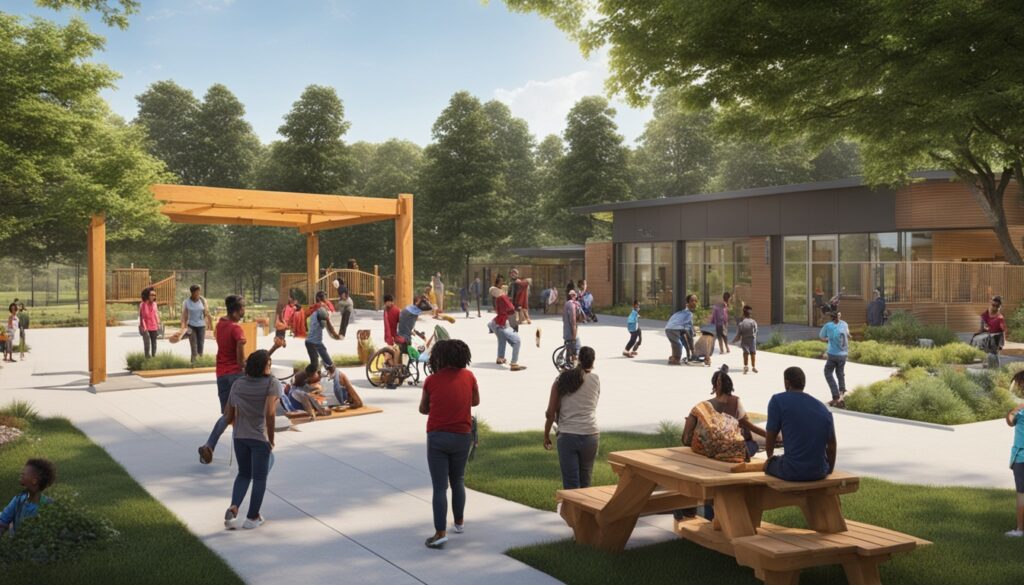
This program supports many types of facilities in rural areas. It makes real improvements in people’s lives. Projects can include:
Many success stories show how these grants make a difference. Focusing on one area, healthcare, shows a lot. In 2022, over a quarter of all projects were about healthcare. This makes clear how critical these grants are for health.
“The new clinic has changed our community. It’s not just a building. It’s better health for everyone.” – Healthcare Project Beneficiary
Education has also seen big changes. For example, a small town improved its school thanks to a grant. Now, over 200 students enjoy a better learning space.
In terms of safety, a rural area got a new fire station. This project served a community with less than 12,000 people. It made emergency help better and increased everyone’s safety.
These grants keep making progress in rural spots. They show how direct support for key services really works.
The Value-Added Producer Grant (VAPG) programme is key for the USDA. It aims to help agricultural businesses grow through new projects and wider markets. It offers around $31 million to boost growth in rural areas. This funding comes from Section 231 of the Agriculture Risk Protection Act of 2000. It’s for various agricultural groups, like single producers, groups, or business ventures led by the majority of producers.
The VAPG programme primarily gives help through Planning Grants and Working Capital Grants. Planning Grants go up to $75,000, and Working Capital Grants up to $250,000 are available. These grants need a cost-match from the recipient. This could include donations or time volunteered towards the project.
The VAPG scheme is aimed at catalyst projects such as processing goods, making renewable energy, and supporting local foods. It doesn’t fund basic agriculture, buying machines, or pay for work done by non-US citizens. It steers support towards projects that bring real value and help agri-businesses succeed.
The broad group of people who can apply shows how the scheme is open to many in the industry. Everyone from solo farmers to large co-ops can benefit. This broad access is key to helping rural areas grow their agricultural businesses.
One notable aspect highlighted in past case studies is how the VAPG program has effectively enabled recipients to innovate and expand, thus driving economic vitality in their regions.
For anyone interested in applying or learning more about the program, they can find details at their state’s USDA Rural Development office. There, they will get the info and support they need to apply.
| Grant Type | Maximum Grant Amount | Matching Funds Requirement |
|---|---|---|
| Planning Grants | Up to $75,000 | 100% of Grant Amount |
| Working Capital Grants | Up to $250,000 | 100% of Grant Amount |
Local utilities are key in helping rural areas grow. They act as the link between big money from the government and local projects. They carefully handle the process of getting, using, and paying back the money. This ensures that plans to help rural areas work well.
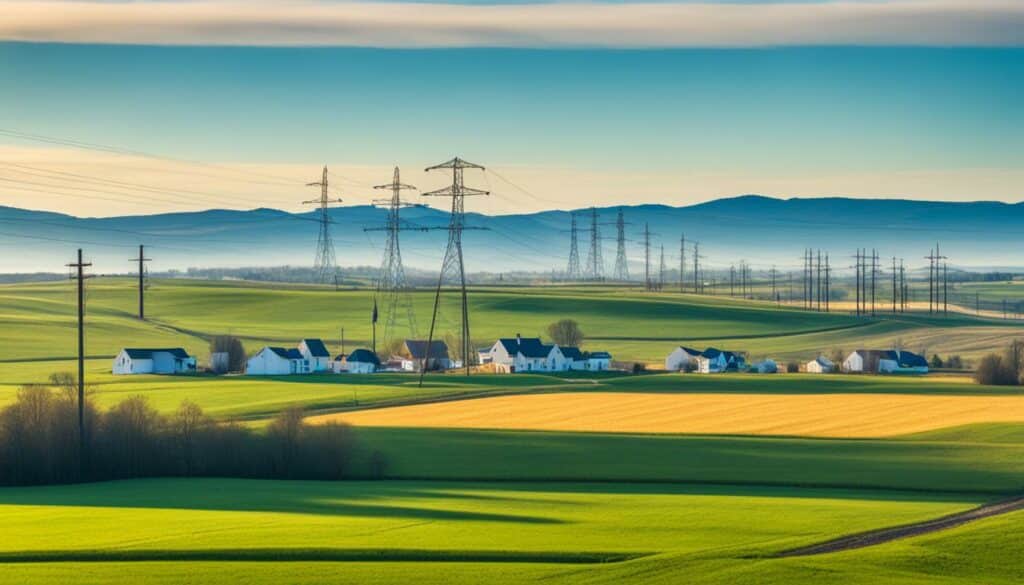
They set up revolving loan funds (RLF) to support community projects. These loans come from grants, up to $300,000 each. A special mention is that 10% of the grant can be used for managing the fund. The local utility also has to put in 20% of the grant as a part of its community work.
The loans they give have no interest, making projects cheaper. Also, they can delay payments for up to two years. This is great for new businesses and community buildings. It helps the local economy grow and builds new things for everyone.
Local utilities have many tasks in funding projects. They look after the process from start to finish, checking all the paperwork and following the rules. For example, loans can go up to $2 million and last up to 10 years. This help is offered with no interest for the first loan.
A lot has been done to make water and waste systems better for over 20 million people in the countryside. This has even connected 207,742 new homes and businesses. Plus, they have given advice over 730,761 times. All this help has greatly improved rural areas and their utilities.
| Loan and Grant Details | Amount/Terms |
|---|---|
| Maximum Grant Amount | $300,000 |
| Maximum Loan Amount | $2 million |
| Interest Rate for Loans | 0% |
| Maximum Term for Loans | 10 years |
| Grant Matching Requirement | 20% |
Rural development grants are changing many communities in the United States for the better. They play a key part in local growth. These grants show their importance by helping rural areas to grow and develop sustainably.
The impact of grants is clear in many success stories. For example, the REAP Grant in Minnesota made farms greener and saved them money. In Pennsylvania, more people are using solar power, showing grants’ positive effects. Plus, microfinance has helped entrepreneurs in big ways. Rural Nevada has seen new chances thanks to the ReConnect Program.
Testimonials for grants speak loudly about their benefits. They talk about how grants have uplifted the lives of many. They mention empowering poorer areas to fight poverty and improve farming. The Maine Flower Collective’s growth is a great example. It shows how grants support local businesses.
Also, education in poorer areas has improved because of these grants. Their impact covers many areas beyond just business.
| Project | Success Rate | Impact |
|---|---|---|
| Kandiyohi County Non-Profit Building Purchase | 100% | Community Development |
| REAP Grant for Christmas Tree Farm | 100% | Sustainability Initiatives |
| Maine Flower Collective | 100% | Local Business Growth |
To use grants well, you need smart plans and careful money handling. This is especially important for groups in the countryside. Creating a solid plan for spending the grant money can really boost development results.
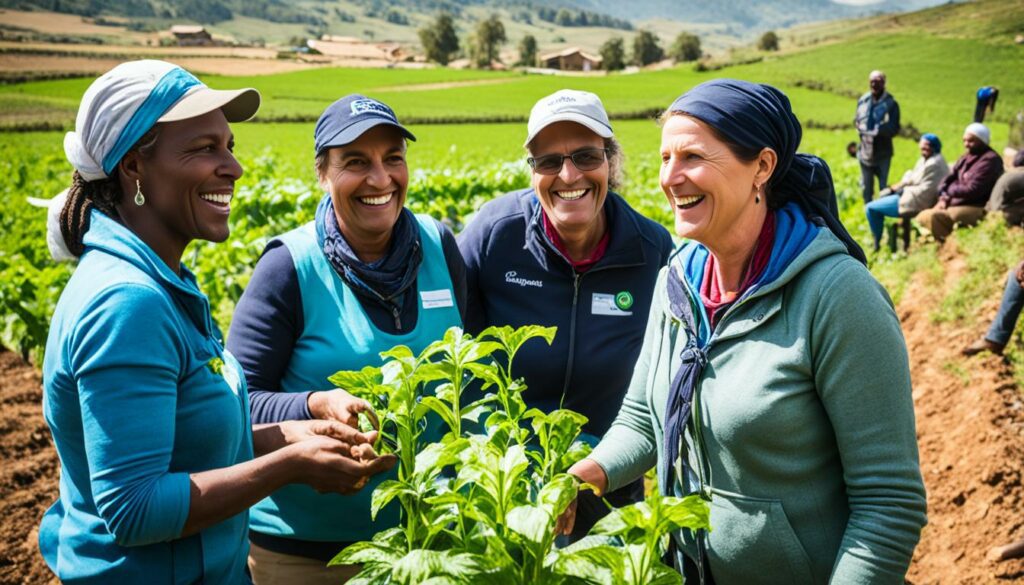
Make a detailed project plan to get the most out of your grant. Grants often help start or grow a business. Use the grant money with your own funds, not just alone.
Many grants need you to match their amount. You can do this with money, but also with volunteer work. Keep a close record of this. Then, proper accounting is key to follow the rules and report right.
Working together is key with grants. Partnering with others can make your grant go further by using shared skills and items. Building a good relationship with grant givers is very important. It helps keep the grant going smoothly.
Once you’ve spent the grant, check if it really helped meet your business goal. This shows if you did well and what to do for the next grant or project.
Investing in rural areas helps grow the economy in a sustainable way. It also improves life quality for people living there. Both the USDA and the EPA are putting in billions to support this with crucial services and projects.
The effect of investing in community growth is huge. Take the $360 million in Alabama for a new hospital. It will help over 333,000 people. In Iowa, $225,000 went to buy a fire truck, improving safety for 576 locals.
In Michigan, a $63,000 grant went to a hospital for a mobile x-ray unit. It will serve over 9,600 people. These stories show how investing can make rural life better and safer.
| Project | Location | Funding | Benefit to Population |
|---|---|---|---|
| Medical West Hospital | Alabama | $360 million | 333,000 people |
| Fire Protection Services | Iowa | $225,000 | 576 people |
| Mobile X-ray Room | Michigan | $63,000 | 9,600 people |
These investments also have long-lasting effects. The USDA’s stake in 731 projects marks a focus on better rural services. Plus, the EPA’s $60 billion investment includes funds for clean water, ensuring health and development in these areas.Projects like replacing old water pipes are key in preparing for future growth. They form a basis for continued economic improvement.
Getting rural development grants is tough. The process is complex and needs a lot of paperwork. Many people want the money, which makes it hard to get.
About 3,000 people learned about the grants in recent sessions. But, the hurdles for applicants are still high.
Officials from the USDA said, “More data means more work for applicants.”
32.5% of those in the SBIR workshops were minorities, and 66.4% were women. But, getting a grant isn’t easier because of this. There are special difficulties for rural areas, with many schools and large uninsured groups.
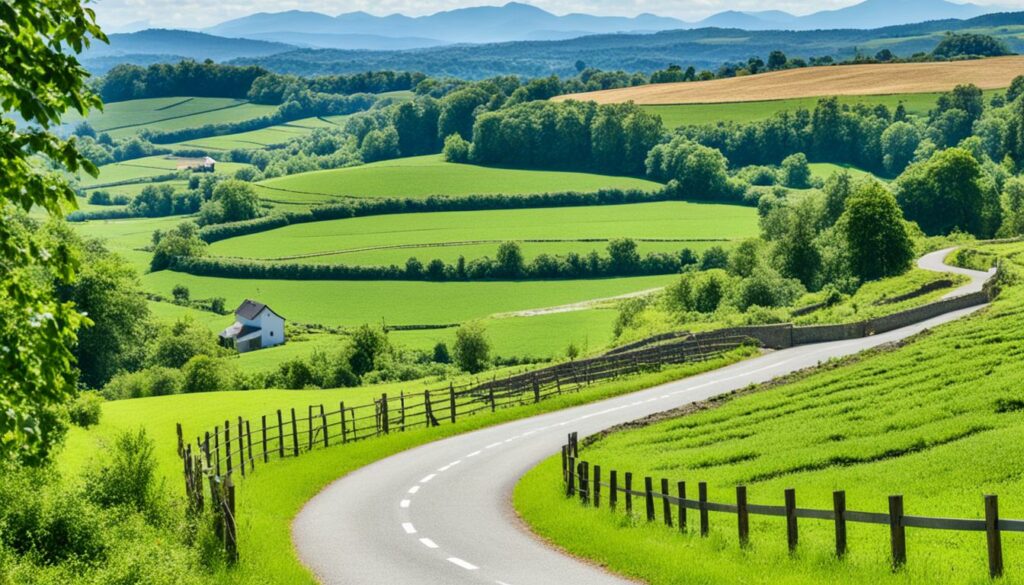
Studies show rural areas are shrinking and getting older. This makes getting grants even harder. To deal with these funding challenges, you need to know the rules well and match your project to what the funders want. This especially applies to the USDA’s Rural Development policies.
Rural development is changing towards more teamwork and use of new technology. The future of regeneration scheme outlook will involve better funding and teamwork between the public and private sectors. These changes are crucial for meeting new demands in country areas.
The Rural Regeneration and Development Fund (RRDF) will cover up to 80% of the project value. Applicants must then match at least 20% of the costs. For big projects in Category 1, they must ask for a minimum of €500,000 from the fund. Any project getting over €10 million is very rare.
For projects in North-West Transition Region, where grants can fund up to 90%, applicants must also contribute at least 10%. If using land as part of the contribution, you must get it valued by an expert.
Places like Cavan, Donegal, and others can get special help. They expect that by 2050, 83.7% of people will live in towns. This means there are big chances and challenges for the countryside.
Young people are expected to play a big role in these plans. A survey with over 2,000 youngsters showed their ideas for the future. This work helps ensure projects meet the younger generation’s needs.
Special tools, like 60 trendcards and 30 case studies, show how to adapt to new trends. These help figure out the best ways to keep up with changes in the countryside.
Experts have made 12 steps and 10 trial projects for the future. These focus on changing with the times, new actions for the land, and farming sustainably. It shows a smart approach to making the countryside better.
A big online course on rural issues from Delft University is helping people learn and shape future projects. Even without a new course, many groups keep working to make a difference in rural areas.
Looking into the resources available to grant applicants can boost your chance of success. It’s key for understanding the process well and gaining an edge.
Online portals and databases are there to help grant applicants. They give info on the grants, who can apply, and when. For example, stay up-to-date with the Rural Business Development Grant (RBDG) which opens on January 2, 2024, and closes on April 1, 2024. This system makes it easy to find what projects are eligible and how they are assessed.
Here’s a table with some online portals and what they offer:
| Resource Portal | Information Offered |
|---|---|
| Grants.gov | Comprehensive database for all federal grants, including eligibility criteria and deadlines. |
| USDA Rural Development | Details on various USDA programs such as the Rural Decentralized Water Systems Grant Program and Meat and Poultry Processing Expansion Program. |
| Foundation Directory Online | Access to grant-making foundations and their funding priorities. |
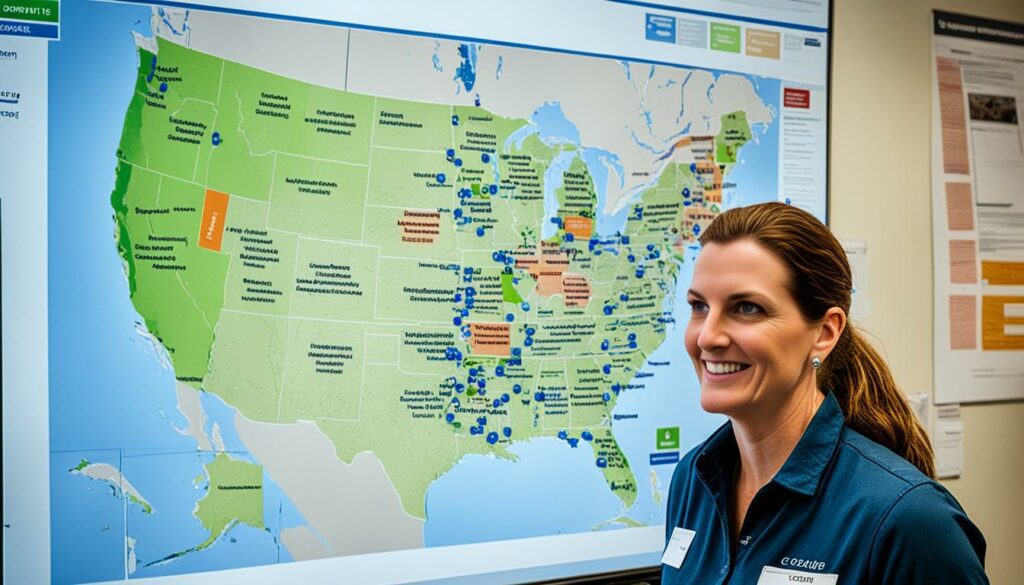
Consultation services can really help grant applicants. They offer guidance on documents and project proposals. They make sure your application fits local needs. They also give tips on how to make your application stand out.
They’re crucial for difficult programs like the Native Community Development Financial Institution Relending Demonstration Program. They can explain rules, such as those from December 14, 2023, under the RBDG. These professionals help you understand what the program needs.
Using these extra resources and expert help can make your application process smoother. It can also increase your chances of getting funding for your project.
Getting development grants might look hard, but getting answers to common questions and knowing where to get help can make things easier.
People often ask about who can get the Socially Disadvantaged Groups Grant. Cooperatives, whether as a big group or as single ones, are eligible. The good news is you don’t need to match the funds, making it simpler to apply.
Others want to know how to apply. You have 60 days to submit your application and can ask for up to $175,000. Remember, if you get the grant, you’ll have to send in updates on your financial situation and how your project is doing.
When it comes to identification numbers, use the Unique Entity ID (UEI) now, not the DUNS number, for financial help from the government.
If you need help with a grant application, check the Federal Register for up-to-date info. This is published annually.
Another question is about the board. To qualify, most of the board must be from socially disadvantaged groups.
The USDA’s website also has lots of info that can help you through the application. Using these resources can make sure you’re ready to get the funding for your community projects.
Rural development grants help breathe new life into countryside areas in the US. These grants, from $10,000 to $500,000, are key for small and new businesses. They make sure many places get money, even though the biggest grant isn’t set.
Grants are available every year, through local USDA offices. Many groups can apply, like towns and charities. The main aim is to boost small businesses, help them grow, and create jobs.
To get these funds, you must be registered on SAM and keep your info up-to-date. Applying is quite thorough, needing project details and benefits clearly explained. This process makes sure funds go where they’re needed most, helping communities grow in a sustainable way.
Rural development grants are crucial. They aim to boost the economy in rural areas. This is done by creating jobs and improving life quality. They fund projects such as community buildings and infrastructure.
Those linked to rural utility organisations can apply. This includes RUS borrowers and not-for-profit utilities. The areas eligible have populations under 50,000.
These grants fund a wide range of projects. This includes business support, community facilities, and farming activities. For example, they support the building of medical centres and schools.
USDA offers programmes like RLF and VAPG. These provide funds for local projects. They aim to boost the economy and farming in rural areas.
USDA’s RLF provides loans and grants to local utilities. They then help fund rural development projects. This includes setting up business spaces and community buildings.
You need to show you meet the requirements. Also, you must submit a detailed project plan. Any other documents the grant asks for need to be included.
Mistakes like leaving parts of the application blank or giving wrong information are common. It’s very important to be very careful when putting together your application.
Local utilities help connect people with USDA support. They ensure the money is used well. They also set rules for how the loans are paid back.
Yes, there are many success stories. These include the renovation of YMCAs and the development of schools and health centres. These show how the grants can change communities.
The future is about using new technology and finding better ways to fund projects. It’s also about public and private groups working together more.
There are many resources available, like online help and specialised services. They aim to make the application process easier and clearer.
You can get help from local utility organisations, USDA offices, and online resources. They can give advice on how to apply for grants.